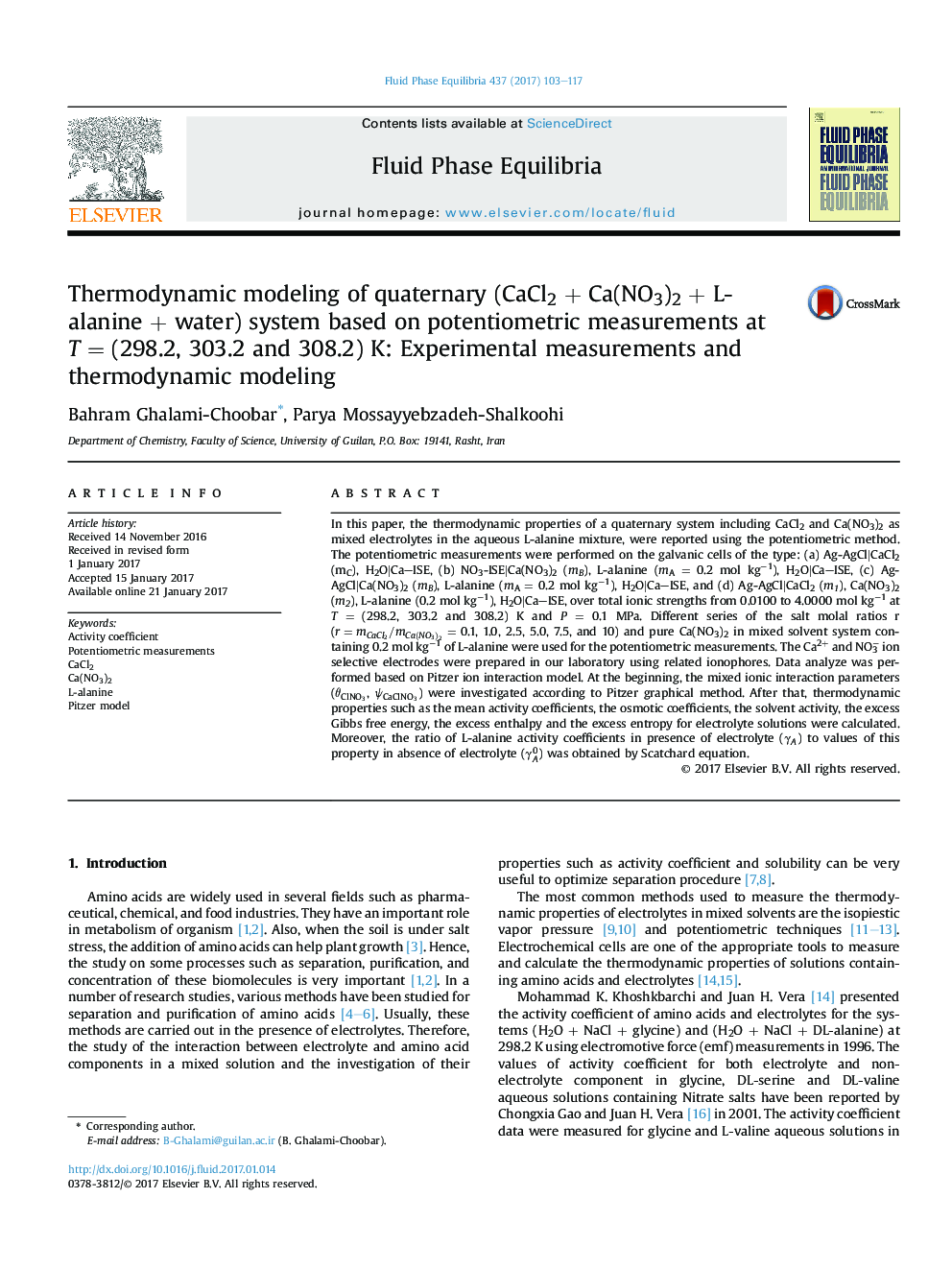| Article ID | Journal | Published Year | Pages | File Type |
|---|---|---|---|---|
| 6473368 | Fluid Phase Equilibria | 2017 | 15 Pages |
•Thermodynamic properties of (CaCl2+Ca(NO3)2+L-alanine + water) system were studied.•The mean activity coefficients of CaCl2 in electrolyte mixtures were determined.•This work was carried out based on potentiometric method with self-made electrodes.•The Pitzer model was applied to describe the behavior of the electrolyte studied.•The Scatchard equation was used to calculate the L-alanine activity coefficients.
In this paper, the thermodynamic properties of a quaternary system including CaCl2 and Ca(NO3)2 as mixed electrolytes in the aqueous L-alanine mixture, were reported using the potentiometric method. The potentiometric measurements were performed on the galvanic cells of the type: (a) Ag-AgCl|CaCl2 (mC), H2O|Ca–ISE, (b) NO3-ISE|Ca(NO3)2 (mB), L-alanine (mA = 0.2 mol kg−1), H2O|Ca–ISE, (c) Ag-AgCl|Ca(NO3)2 (mB), L-alanine (mA = 0.2 mol kg−1), H2O|Ca–ISE, and (d) Ag-AgCl|CaCl2 (m1), Ca(NO3)2 (m2), L-alanine (0.2 mol kg−1), H2O|Ca–ISE, over total ionic strengths from 0.0100 to 4.0000 mol kg−1 at T = (298.2, 303.2 and 308.2) K and P = 0.1 MPa. Different series of the salt molal ratios r (r=mCaCl2/mCa(NO3)2=r=mCaCl2/mCa(NO3)2= 0.1, 1.0, 2.5, 5.0, 7.5, and 10) and pure Ca(NO3)2 in mixed solvent system containing 0.2 mol kg−1 of L-alanine were used for the potentiometric measurements. The Ca2+ and NO3− ion selective electrodes were prepared in our laboratory using related ionophores. Data analyze was performed based on Pitzer ion interaction model. At the beginning, the mixed ionic interaction parameters (θClNO3θClNO3, ψCaClNO3ψCaClNO3) were investigated according to Pitzer graphical method. After that, thermodynamic properties such as the mean activity coefficients, the osmotic coefficients, the solvent activity, the excess Gibbs free energy, the excess enthalpy and the excess entropy for electrolyte solutions were calculated. Moreover, the ratio of L-alanine activity coefficients in presence of electrolyte (γAγA) to values of this property in absence of electrolyte (γA0) was obtained by Scatchard equation.
